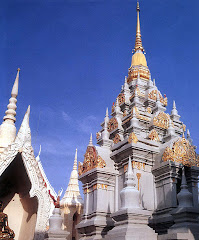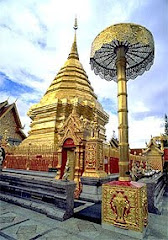During the reign of Phra Borom-Kote, the thirty-first of Ayutthaya kingdom, there reigned in Ceylon a king named Kitti-Siri-Raj-Singha, who being discouraged by the decline of Buddhism in his island country and learning that Buddhism was purer in Thailand than any other country, sent forth his religious mission to the Thai King, asking a favour of some Thai bhikkhus to revive the spirit of Theravada Buddhism which had almost died out in his land. This was a good occasion when Thailand was able to repay her debt to Ceylon and the Venerable Upali, together with his followers, were sent to Ceylon. Thus the community of Ceyl;onese bhikkhus ordained by the Thai bhikkhus at that time has ever since been called Upali-Vangsa or Siam-Vangsa. It is the well known and most revered sect in Ceylon.
Religious literature of Ayutthaya, however, abounded both in Pali and Thai language, but most of them were most regretfully destroyed when the kingdom was ruthlessly overrun by the enemy in 2310 BE.
The Burmese invaded Ayutthaya again in 1765, destroying everything including temples, manuscripts, and religious sculptures. The capital remained under Burmese control for only two years as the Burmese were ineffective at holding the kingdom together. Phaya Taksin, a Thai general, assumed the kingship in 1769 and ruled from the new capital of Thonburi on the bank of Chao Phraya River opposite present-day Bangkok. The Thais regained control of their country and populated the provinces in the north and central part of Thailand. Taksin's leadership turned detrimental and he was eventually dismissed and executed by his ministerssource : www.dhammathai.org
Technorati tags : Ayutthaya Period /Ayutthaya /Thailand Temple /thai temple /Buddhist /Sukhothai








No comments:
Post a Comment